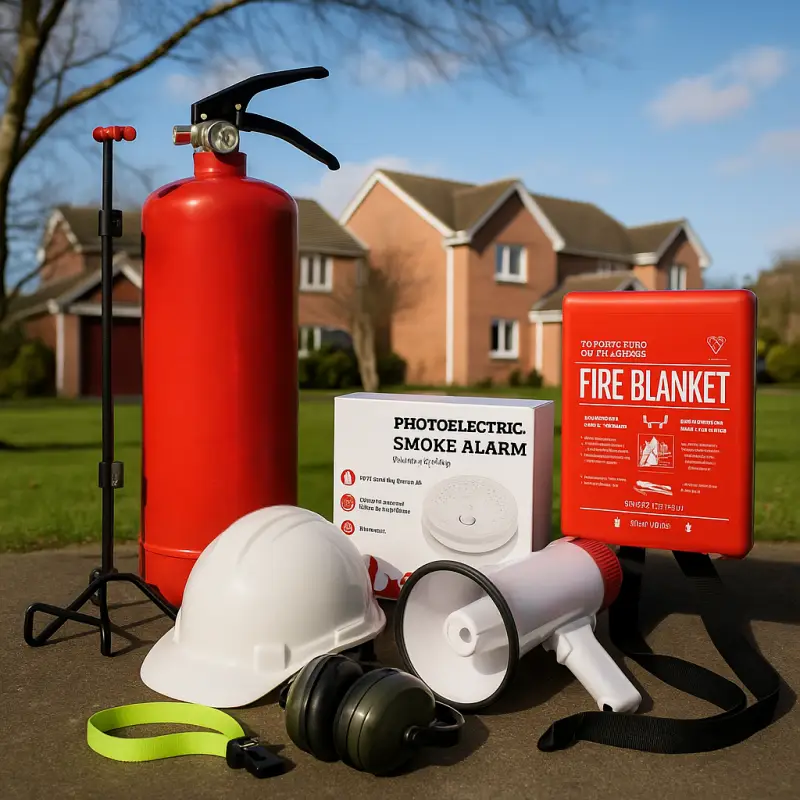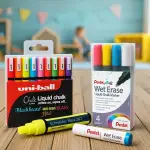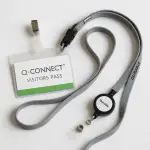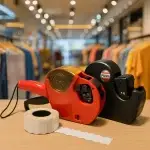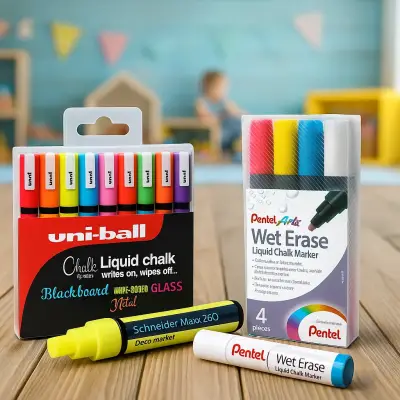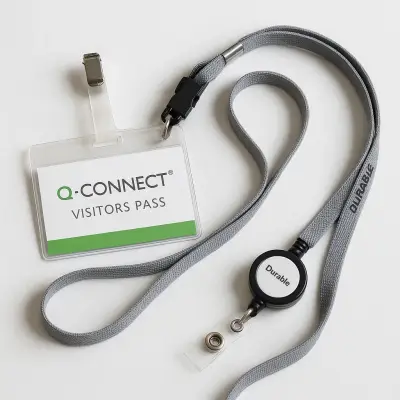Creating Safer Workspaces with the Right Fire Safety Equipment
Fire safety is something we can’t afford to overlook in any professional setting. Offices, workshops, warehouses and retail spaces all carry some level of fire risk. Whether it’s from faulty wiring, cooking appliances or flammable materials, having the correct fire safety equipment in place makes all the difference. It not only helps save lives but also protects valuable property from avoidable damage.
We’re going to walk through the key types of fire safety tools that every workplace should have. That includes systems for early warning, response tools like fire extinguishers and blankets, and crucial evacuation aids. At A2B Office Supplies, we stock a wide range of essential fire safety equipment to help you cover all the bases.
Early Detection: Protecting Before Fire Takes Hold
One of your first lines of defence in fire safety is early warning. Fire alarms and smoke detectors are designed to alert everyone as soon as smoke or heat is detected, giving you precious minutes to act.
There are different types of smoke detectors available. Photoelectric detectors are better at catching slow-smouldering fires, such as a carpet catching alight. Ionisation detectors respond faster to fast-flaming fires, which spread quickly through combustibles like paper. Heat detectors work well in areas like kitchens or boiler rooms, where dust or steam may cause false alarms in smoke sensors.
To make sure no one misses an alert, it’s always better to install interconnected alarms that trigger across the entire building. That way, everyone has the warning they need, no matter where the fire starts.
Fire Extinguishers: First Defence Against Fire
Fire extinguishers have a crucial role in tackling fires in the early stages before they become uncontrollable. Each workplace should have the correct types of extinguishers for its specific risks, and staff should be trained to use them properly.
There are several classes of fires, and each needs a specific kind of extinguisher:
- Class A: Fires involving solid materials like wood, paper or cloth
- Class B: Fires from flammable liquids, such as petrol or oils
- Class C: Fires caused by electrical equipment
- Class D: Fires involving combustible metals
- Class K: Kitchen fires involving fats and oils, especially from deep fryers
The extinguishing agent used matters just as much:
- Water and foam extinguishers handle Class A and some Class B fires
- Carbon dioxide (CO2) extinguishers are great for electrical fires since they don’t leave behind residue
- Dry chemical powder extinguishers, especially ABC-rated ones, are a good all-around choice for mixed-risk offices
- Water mist or spray extinguishers can be safe for delicate areas, offering fine control without causing damage from drenching
Don’t forget about smart placement either. Fire extinguishers should be clearly visible and easily accessible. Near exits, along escape routes and close to known hazards like kitchen areas are good places to mount them. Using the right brackets and accessories like our fire safety accessories, helps keep them secure and ready to go.
Proper fire extinguisher servicing is critical, too. You need regular checks and maintenance to stay compliant with UK fire safety regulations. The extinguisher might look fine on the outside, but inside it could be undercharged or damaged. This is where fire extinguisher servicing comes in to make sure everything is fully functional for the next inspection or emergency.
Practical Fire Extinguisher Servicing and Checks
We’ve seen many businesses pass fire safety inspections after keeping a solid maintenance routine. Fire extinguisher servicing should happen at least once a year by a qualified technician. This includes checking for pressure losses, making sure seals and gauges are intact, and replacing parts if needed.
Weekly or monthly visual checks also help. Look out for blocked access, corrosion or missing tags. The better condition your extinguishers are in, the less likely they are to fail when you need them most.
In high-traffic zones or industrial sites, you might need more frequent servicing. For businesses handling chemicals or cooking oils, the stakes are higher, and so is the risk.
Supporting Fire Equipment That Complements Extinguishers
Of course, fire extinguishers on their own won’t meet all your safety needs. Other types of equipment make it easier to manage an outbreak smoothly and keep people safe.
Here are a few more tools we suggest having:
- Fire blankets: Brilliant for smothering clothing fires, or small pan fires in a kitchen. Lightweight and simple to use.
- Fire hose reels: Effective in larger premises or warehouses for a sustained water supply.
- Sprinkler systems: Automatic detection-and-suppression systems that activate with heat.
- Emergency lighting and fire safety signs: Help guide everyone to a safe exit, even in poor visibility. We stock fire safety signs suitable for all professional spaces.
- Fire-safe bins: These fire-retardant bins limit risk from waste items catching alight.
- Emergency kits and first aid: Useful after a fire has been extinguished, especially in the case of burns or inhalation.
Each item plays its part in a full circle of prevention, alerting, action, and recovery.
Building Safety Starts with Awareness and Training
Fire safety equipment only works if people know how and when to use it. That’s why training is just as essential as having the right gear.
Even a simple training session can make the difference between quick action and panicked confusion. Most businesses include it in new employee induction, with additional refreshers provided each year.
Make sure team members know:
- Which fire extinguishers are for which types of fire
- Where equipment is located
- How to activate alarms
- What the evacuation process or assembly point is
It’s also important to test equipment regularly. Ensure smoke detectors work, emergency lights stay powered and that all equipment is fit for purpose. Professionally fitted tools may also be supported by regular fire extinguisher servicing contracts, which are very helpful if you manage multiple sites or large teams.
What to Look for When Buying Fire Extinguishers
Not every extinguisher suits every building. If you run a small office, an ABC dry powder extinguisher might be enough for general use. But kitchens, manufacturing areas, or laboratories often need specific types.
Key points to think about:
- Building layout: Larger premises may require more extinguishers or ones with greater capacity
- Surrounding risks: Look at the type of materials or machinery in use
- Mounting and positioning: Use certified brackets and place extinguishers at visible, accessible points
- Storage environment: Cold external locations might need specialist units that work at sub-zero temperatures
Browse our fire safety section for reliable equipment across all categories or check our full fire safety equipment collection that includes extinguishers, signs and emergency products suitable for most business types.
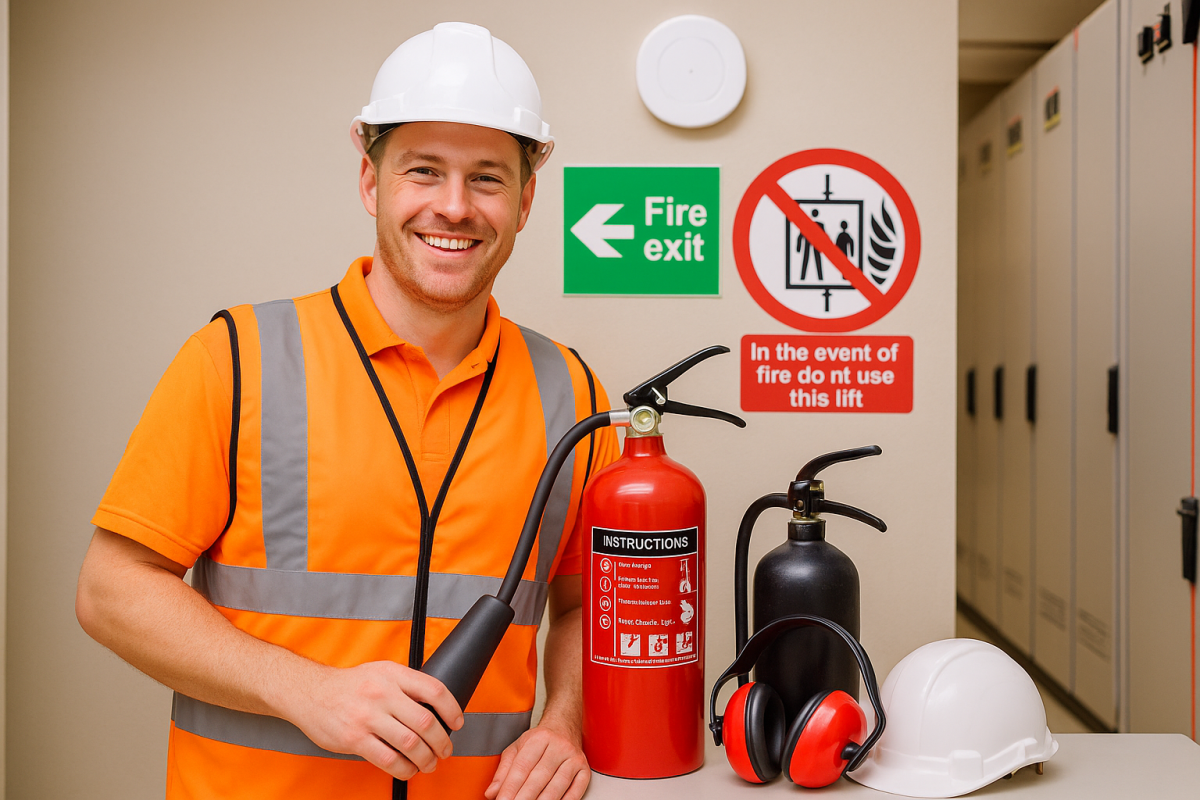
FAQs
How often should I replace a fire extinguisher?
Most last between 5 to 15 years, depending on type and usage. Make sure they’re serviced and checked regularly to stay in good working order.
Where should I install a fire extinguisher?
Place them near exits, hazard zones like kitchens or near electrical equipment. All should be mounted at an accessible height and clearly signposted.
Can someone use the wrong type of extinguisher by mistake?
Yes, and it can be dangerous. For example, using a water extinguisher on an electrical fire can cause electrocution. Proper fire extinguisher servicing labels and staff training help avoid this.
What’s better for offices: dry powder or CO2 extinguisher?
Both have uses. Dry powder covers more fire classes but is messier. CO2 is clean and good with electronics. Often, offices use both near server rooms or desks.
Stay Ready with the Right Equipment From A2B Office Supplies
Having the correct fire extinguishers, alarms, and accessories is not just a tick on a safety checklist; it’s something that could protect lives and your business. Our range at A2B Office Supplies covers everything from detection tools to fire suppression and safe evacuation gear.
Remember, fire extinguishers are vital, but only when used in the right place, at the right time, and kept in working condition with proper fire extinguisher servicing. Whether you’re fitting out a home office or managing a multi-floor site, it pays to be prepared.
You can explore our full fire safety equipment range to help keep your environment protected and compliant.

